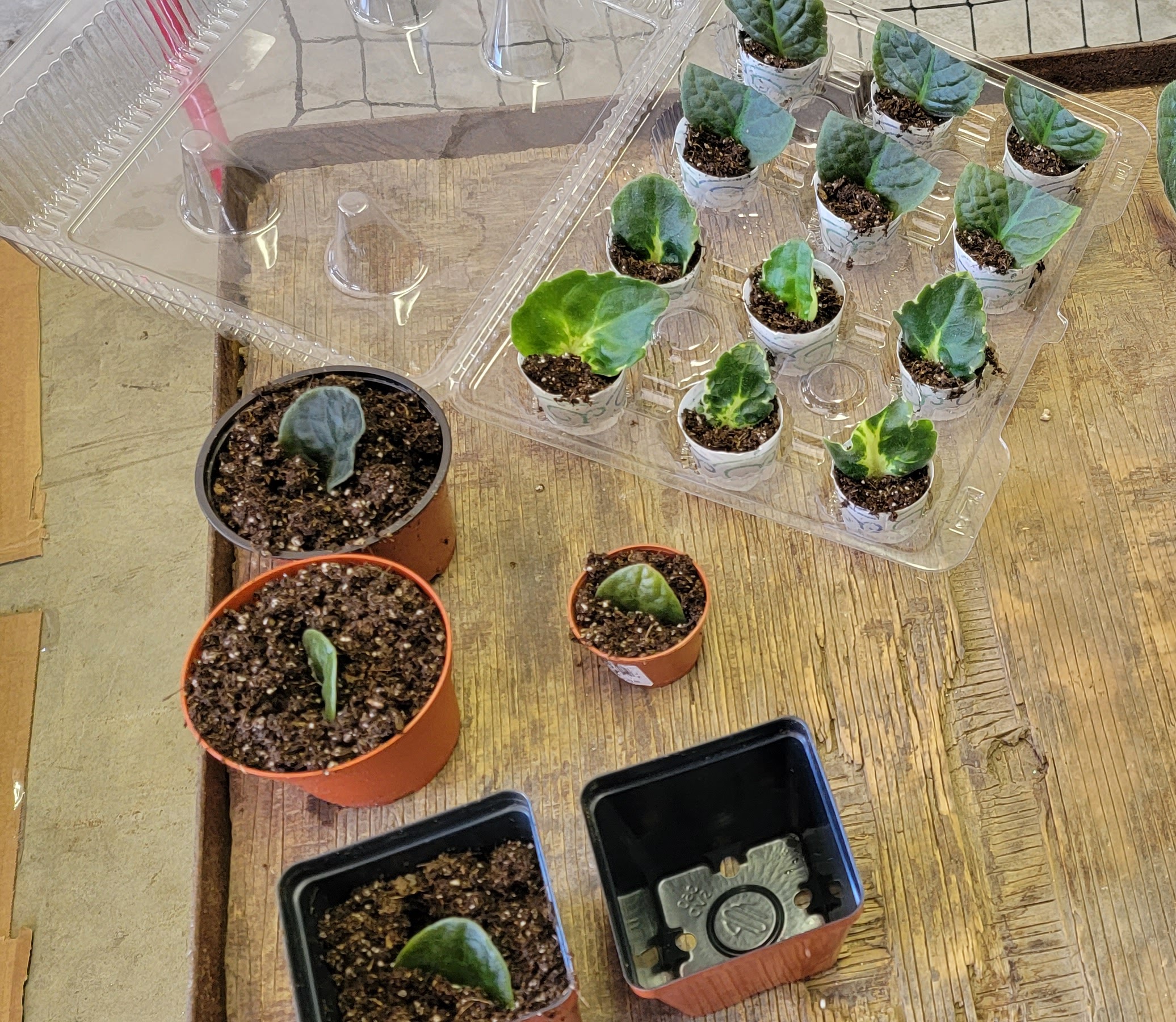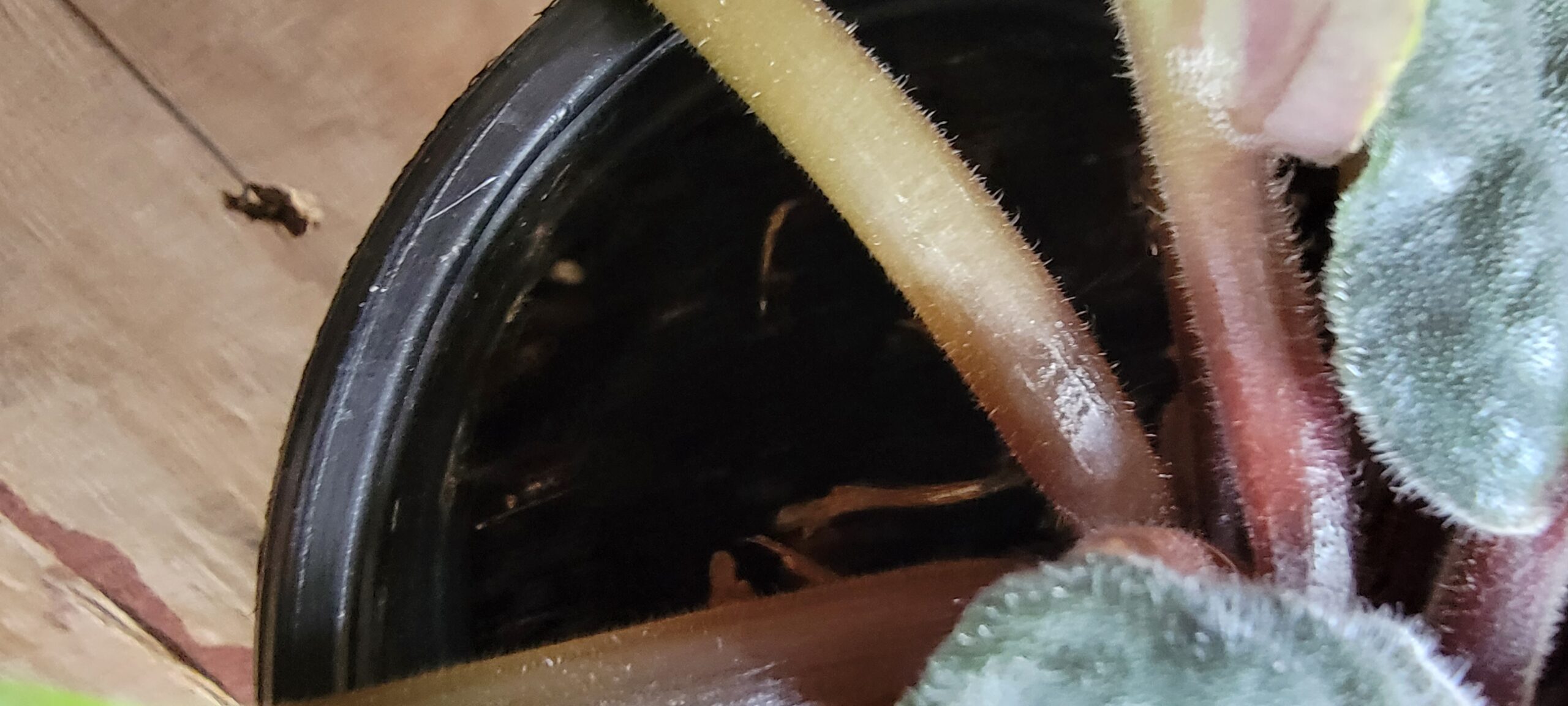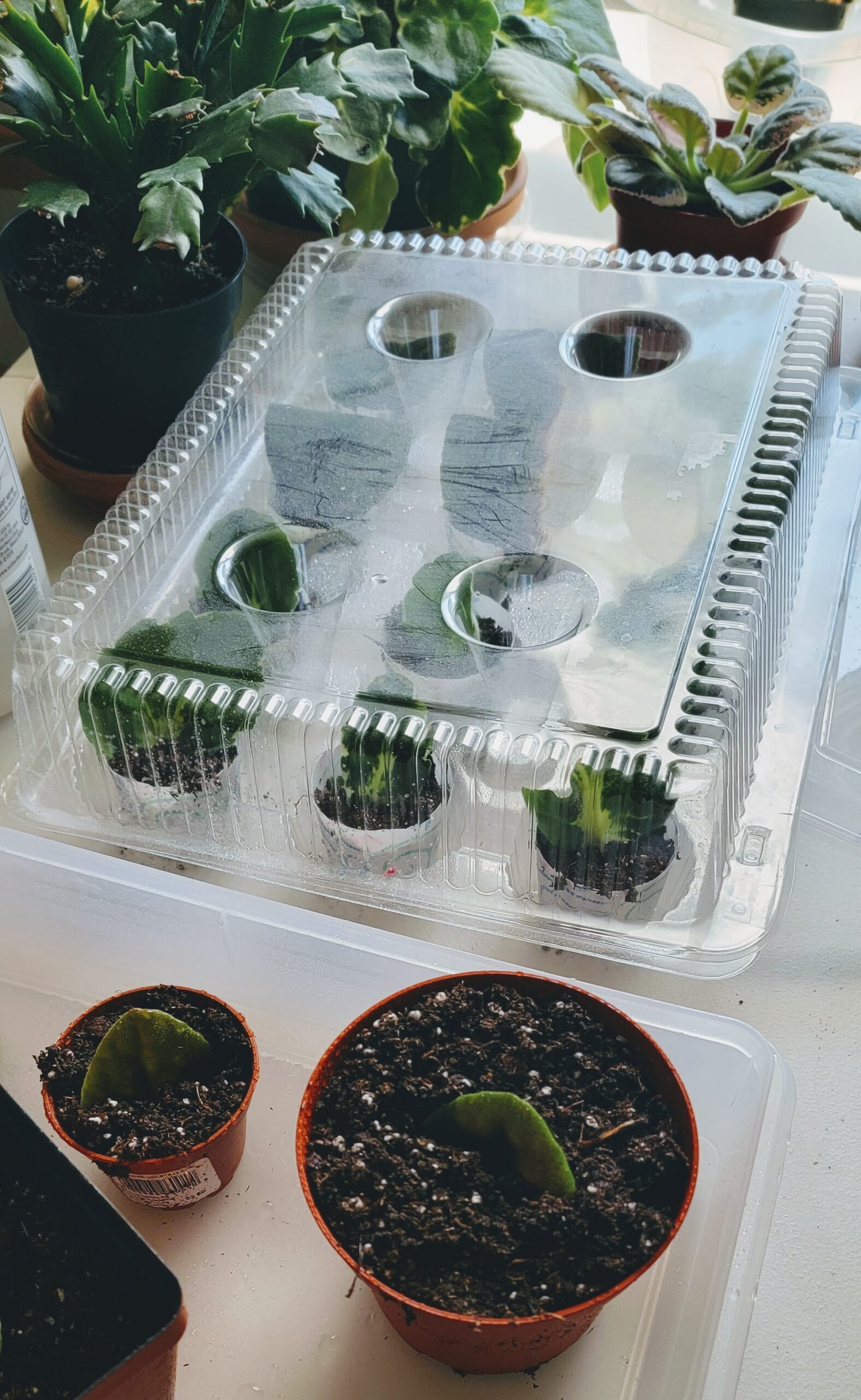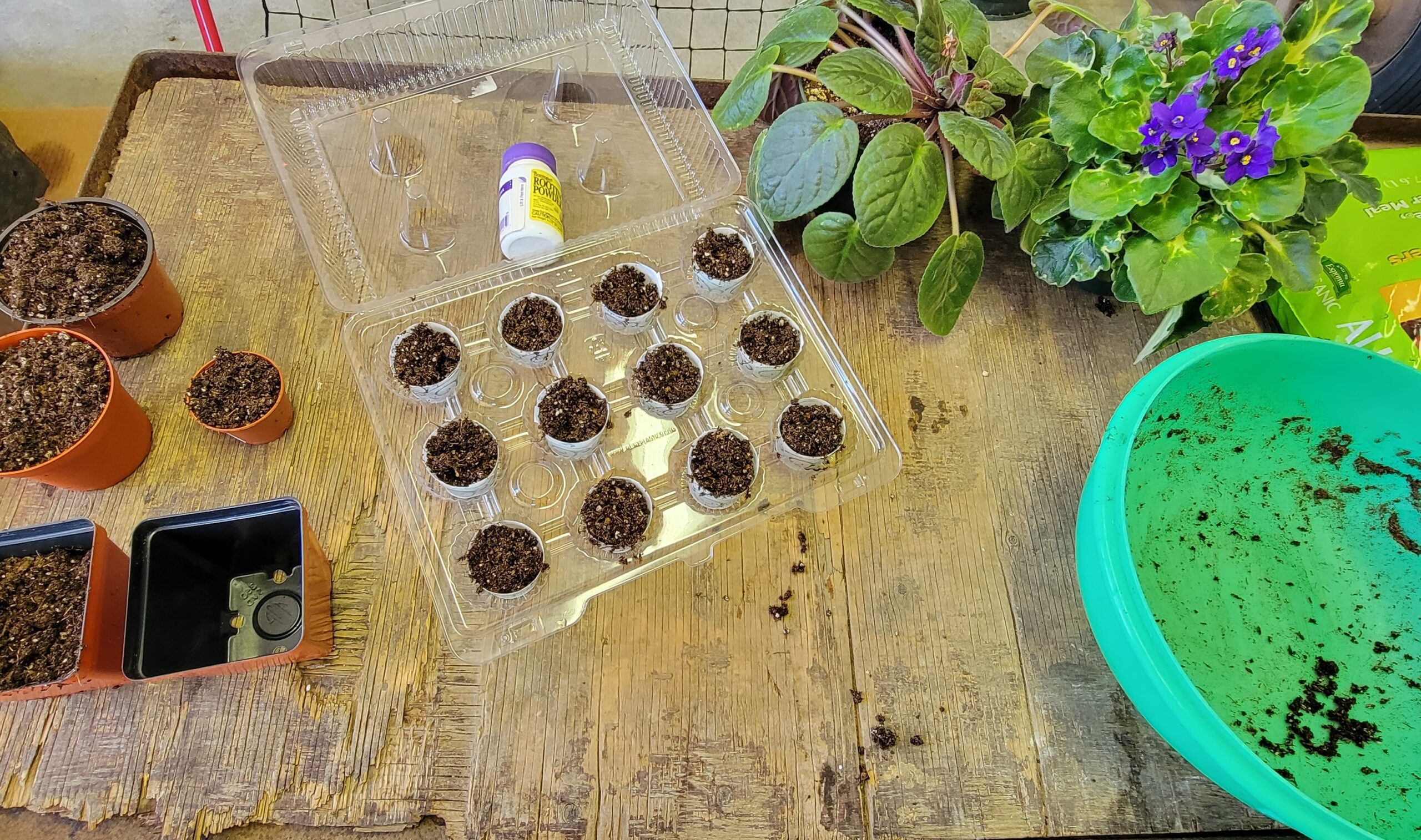What Happened To My Violets?

My Poor African Violets
I have been watching all my African Violets slowly die over the last few weeks. I have had a pit in my stomach, hoping they would pull out of it. But then, last week, I just knew. Root Rot! Sigh. I wrote to my friend Jenny from Russian Violets and sent her some photos. It was as I feared.
Root Rot happens when you overwater and over-fertilize the plants. Sadly, there’s nothing that can be done to save them. However, Jenny suggested trying to salvage a few leaves by rooting them in some light soil, so I decided to give it a shot.
What I Did Wrong
I have to take responsibility for this situation. About six weeks ago, I thought it was time to water them (I usually let them dry out) and decided to water them from the bottom. I got a big tray and thought mixing some fertilizer would be good. I only had a little left (or so I thought), and instead of measuring it like I usually do, I dumped it all in. BIG MISTAKE. It looked strange. The bottle was ancient, and not measuring the fertilizer and just dumping it in the tray could have been better.
I also re-read some of Behnke’s older articles, and this statement jumped out at me “Try not to subject your plants to sudden or extreme temperature changes” I had taken these violets to my mother’s Celebration of Life garden party. It was on that hot CODE RED day in early June. You could even smell the smoke from Canada. That was a pretty extreme temperature change as they sat out there for about 6 hours and then went back into my air-conditioned house. Then a few days later, I did the whole fertilizing thing.
After that, I placed the violets in the tray and walked away. I moved them back to the window a few houses later. They ended up being VERY WET. Looking back, I realize I did everything wrong. Usually, I wouldn’t have worried as much, but two of them were unique old varieties I bought from Jenny, and worst of all, my mother’s cherished Chanticleer, which she had for over 50 years. It had gone through numerous repotting sessions at Behnke’s in the past. Mom’s husband divided the original plant and had four beautiful ones remaining. He gave me this particular one. It just breaks my heart to witness this plant’s beginning of the end.
Rooting African Violets
I went to the store to get some Espoma Seed Soil. When I was a little girl at Behnke’s, I used to help with the violets, cleaning off the old blooms and leaves. I watched my grandmother and mother take cuttings of the leaves and stick them into a sandy perlite mixture. Since we closed the nursery, I don’t have many supplies left, but we did have a jar of Rootone, and my daughter had a plastic cupcake tray with a lid that could work as a makeshift greenhouse.
I cut some Dixie cups and made holes in the bottom of my pots. Then my granddaughter, Zoe, and I poured some soil into a large bowl, got it damp, and carefully selected only the healthiest leaves. I took six leaves from the Chanticleer and six from the Behnke Boy Violet (which still looks healthy). I also salvaged a few perfect leaves from the rotting violets and planted them in separate pots. It will take about 3 to 4 weeks for roots to form around the stems and another 3 to 4 weeks for tiny leaves to sprout. I need to be patient, although it’s challenging for me. But within 3 to 6 months, I hope to see some progress. Fingers crossed!
Never Give Up
What’s especially tough for me about this whole situation is that I’ve always been the Behnke who couldn’t keep violets alive. I could never manage to grow them successfully. My grandmother and mom had them, and their violets never ever died. (Hmm, they just never told me.) Customers always mentioned how beautiful their violets were, making me feel even worse.
About three years ago, I moved the one I had bought from Homestead Gardens to a different spot. Yes, I’ve been determined to grow them despite my failures. And guess what? Just moving them somewhere else did the trick! (That’s like the basic 101 lesson in houseplant care.) That violet started thriving and blooming, so I bought a few more and continued to have success! Then my stepfather gave me the Behnke Boy Violet he had potted in a 6-inch pot with one of Mom’s Chanticleers. Both of them thrived too! They bloomed in time for my mother’s Celebration of Life at the beginning of June.
I’m not giving up. I plan to visit a garden center and buy a few more violets to enjoy. Meanwhile, I’ll watch my leaves closely and hope they grow strong babies. How about you? Have you ever experienced heartbreaking failures with a beloved plant?





I’ve had some success with rooting the leaves in a small jar of water. When it has roots and a few tiny leaves, I then transplant it to soil. I’ll have to try your way of doing it. I get beautiful leaves, but blossoms are few and far between too. .I used to love to wander through Behnke’s as a kid and adult.
Hi there, I knew we could do it in water and I still might try that since I have a few more leaves. But as a little girl, mom always did them in the sandy soil. Thanks for reminding me about the water method!